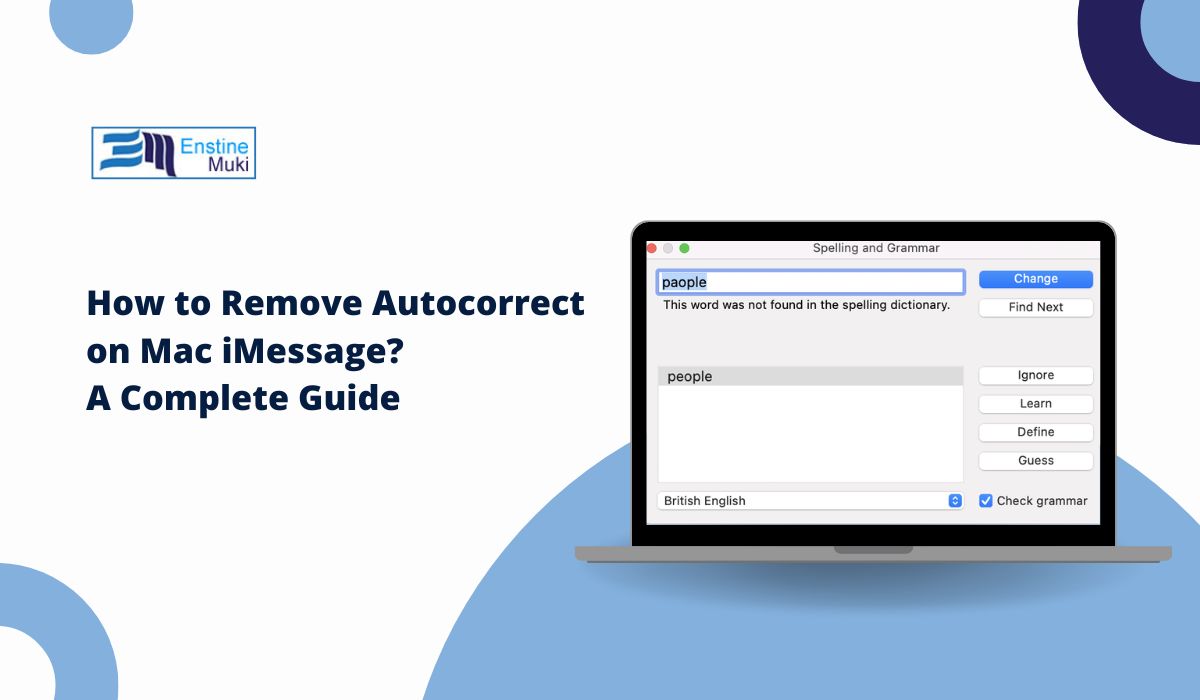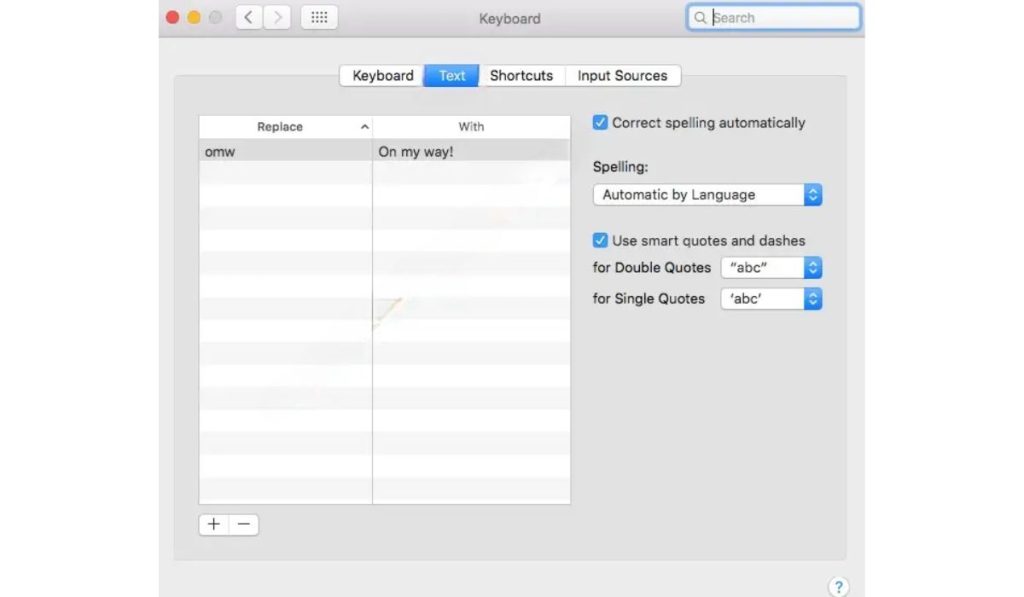Autocorrect in macOS iMessage is meant to improve typing accuracy by automatically fixing spelling mistakes. However, it often replaces words incorrectly, leading to frustrating typos, unintended word changes, and issues with multilingual typing. If you’re tired of constantly correcting autocorrect, disabling or customizing it might be the best option.
This guide will show you how to turn off autocorrect in iMessage on Mac, adjust text correction settings, and troubleshoot issues where autocorrect continues working after being disabled.
Why Do People Want to Disable Autocorrect in iMessage?
Autocorrect can be useful, but it doesn’t always get it right. Here’s why many users prefer to turn it off:
- Incorrect Word Replacements – Autocorrect frequently changes names, slang, and technical terms, causing confusion and frustration in conversations.
- Slower Typing Speed – Instead of improving efficiency, autocorrect often forces users to go back and fix words that were replaced incorrectly, making messaging slower.
- Issues with Multilingual Typing – If you type in multiple languages, macOS may try to force one language over the other, leading to frequent and unnecessary corrections.
- Unwanted Capitalization & Formatting Changes – macOS sometimes capitalizes words incorrectly or adds punctuation where it isn’t needed, disrupting the natural flow of typing.
If you experience any of these problems, the best solution is to disable autocorrect or adjust text correction settings to better suit your needs.
How to Remove Autocorrect in macOS iMessage
Here are solutions you can try one by one.
1. Disabling Autocorrect via System Settings
The easiest way to turn off autocorrect in iMessage is through the System Settings menu. This method will disable autocorrect across all macOS applications, including iMessage, Safari, Notes, and Mail.
- Click the Apple Menu () in the top-left corner and select System Settings.
- In the sidebar, scroll down and click Keyboard.
- Under Text Input, find the Autocorrect toggle.
- Turn Autocorrect Off to disable automatic spelling corrections.
Once this is done, macOS will no longer change words automatically when typing in iMessage.
2. Turning Off Autocorrect in Keyboard Preferences
If autocorrect is still working after disabling it in System Settings, you can turn it off directly from the Keyboard Preferences panel.
- Open System Settings and navigate to Keyboard → Edit Text Preferences.
- Locate the option Correct spelling automatically and uncheck the box.
- Close the settings and restart iMessage to apply the changes.
This method ensures autocorrect is turned off for all applications that use macOS’s text correction system.
How to Customize Text Correction Instead of Disabling It
If you don’t want to completely disable autocorrect, you can train macOS to recognize words instead of changing them.
- Add Words to the macOS Dictionary – Right-click a word that autocorrect changes and select Learn Spelling.
- Use Text Replacements – Go to System Settings → Keyboard → Text, and set up custom text shortcuts that prevent unwanted changes.
- Disable Spell Check Without Disabling Autocorrect – If you only want to stop red underlines but keep autocorrect enabled, go to Edit → Spelling and Grammar → Uncheck “Check Spelling While Typing” in iMessage.
These options allow you to keep some level of text correction while preventing unnecessary autocorrections.
Alternative Methods to Manage Autocorrect in iMessage
If you want more control over autocorrect without completely disabling it, here are some options:
1. Manually Override Autocorrect
If macOS incorrectly changes a word, you can manually override the correction. When the word is automatically altered, immediately press Esc on your keyboard before pressing the spacebar. This prevents macOS from saving the correction and allows you to keep your original word.
This is especially useful for names, technical terms, and slang that autocorrect frequently changes.
2. Use the Undo Autocorrect Shortcut
Another quick way to fix autocorrect mistakes is by using the Undo shortcut. If macOS changes a word you didn’t intend to fix, press Cmd + Z immediately after the correction.
This reverts the word to what you originally typed, helping you avoid unnecessary typos and corrections without having to go back and manually retype the word.
3. Check Language Settings
If you type in multiple languages, autocorrect may force one language over another, leading to incorrect corrections. To fix this, go to System Settings → Keyboard → Text Input and ensure the correct primary language is selected.
You can also enable multiple language keyboards so that macOS recognizes when you’re switching between languages instead of incorrectly autocorrecting words.
4. Use Text Replacement Instead of Autocorrect
Instead of relying on autocorrect, you can set up custom text replacements for words macOS frequently changes.
Go to System Settings → Keyboard → Text and add a custom shortcut where a specific word or phrase stays exactly as you type it. This ensures macOS doesn’t replace important words but still allows for quick typing shortcuts.
These methods help minimize frustration while keeping some of macOS’s smart text correction features enabled.
Troubleshooting Issues After Disabling Autocorrect
Sometimes, autocorrect may continue working even after being disabled. Here’s how to fix it:
- Restart your Mac – Some settings require a restart to take effect.
- Check Individual App Settings – Go to iMessage → Edit → Spelling and Grammar and uncheck Correct Spelling Automatically.
- Reset Keyboard Preferences – If autocorrect persists, navigate to Library → Preferences, find
com.apple.keyboard.plist, and delete it. This will reset all keyboard settings to default.
If none of these fixes work, consider resetting macOS’s keyboard dictionary by running this command in Terminal:
defaults delete -g NSAutomaticSpellingCorrectionEnabled
After running this command, restart your Mac to ensure autocorrect is fully disabled.
Final Thoughts
Disabling autocorrect in iMessage on Mac can prevent incorrect word replacements and make typing smoother and more efficient. If you fully disable autocorrect, customize text correction settings, or use text replacements, you can control how macOS handles spelling without unnecessary interruptions.
If autocorrect continues working after being disabled, try resetting keyboard preferences or checking individual app settings. Still having trouble? Leave a comment below and share your experience!


